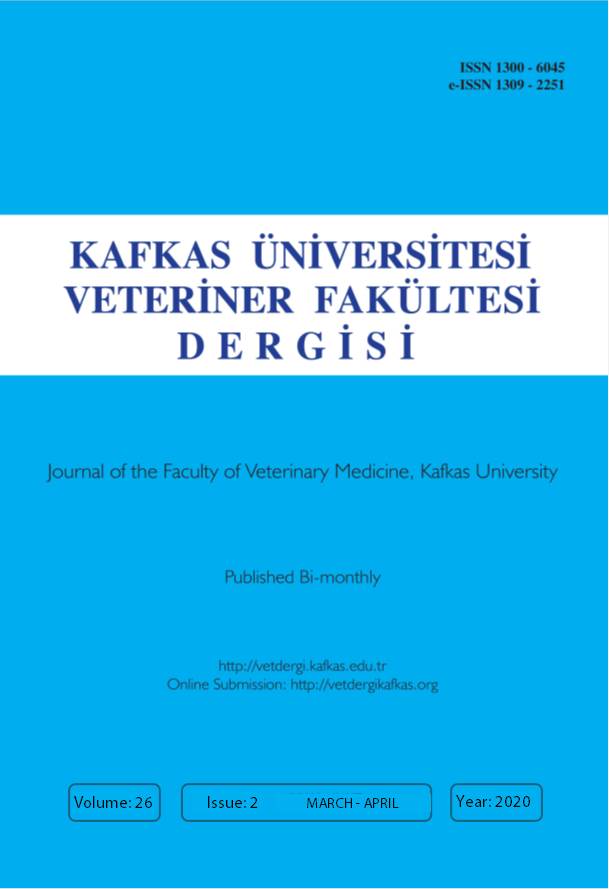
This journal is licensed under a Creative Commons Attribution-NonCommercial 4.0 International License
Kafkas Üniversitesi Veteriner Fakültesi Dergisi
2020 , Vol 26 , Issue 2
The End-systolic Wall Stress/End-systolic Volume Index Ratio for Systolic Function in Anatolian Shepherd Dogs with Stage B2 Degenerative Mitral Valve Disease
1Near East University, Faculty of Veterinary Medicine, Department of Internal Medicine, Postal Code: 99280, Nicosia, NORTH CYPRUS2Kyrgyz Turkish Manas University, Faculty of Veterinary Medicine, Department of Internal Medicine, Postal Code: 720011 Bishkek - KYRGYZSTAN
3Selcuk University, Faculty of Veterinary Medicine, Department of Internal Medicine, Postal Code: 42003 Konya - TURKEY
4Near East University, Faculty of Veterinary Medicine, Department of Physiology, Postal Code: 99280, Nicosia, NORTH CYPRUS DOI : 10.9775/kvfd.2019.22661 This study was performed to evaluate the end-systolic wall stress/end-systolic volume index ratio (ESWS/ESV-I) for LV systolic function in Anatolian shepherd dogs (ASHs) with stage B2 degenerative mitral valve disease (DMVD). Thirty-eight adult ASHs with DMVD (experimental group; 20 B1 dogs and 18 B2 dogs) and 30 weight-matched adult healthy ASHs (control group) were used as subjects. There was no overlap for the ESWS/ESV-I ratio (0.83±0.03, range: 0.61-1.09 for B2 dogs, 1.34±0.05, range: 1.11-1.89 for B1 dogs, 2.17±0.0 range: 1.91-3.02 for the control dogs) among the groups. ESWS/ESV-I ratio (≤1.09) in ASHs with stage B2 DMVD may play a developmental role in left ventricular remodelling and risk factor for development of systolic dysfunction. Keywords : Anatolian shepherd dog, Degenerative mitral valve disease, Echocardiography, End-systolic wall stress/end-systolic volume index ratio, Systolic function indices










